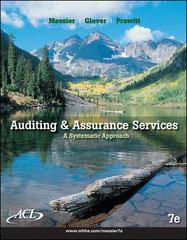Answered step by step
Verified Expert Solution
Question
1 Approved Answer
On 1 July 2 0 1 9 , Diana Ltd acquired 1 0 0 % of the issued shares of Charles Ltd for $ 3
On July Diana Ltd acquired of the issued shares of Charles Ltd for $ At the date of acquisition, the shareholders equity of Charles Ltd consisted of:
$
Share capital
General reserve
Retained earnings
At June the accounts of the two companies are presented below.
Diana Ltd
$ Charles Ltd
$
Sales
Cost of goods sold
Gross profit
Dividends revenue
Interest revenue
Less Expenses
Depreciation
Financial expenses
Selling expenses
Profit before tax
Tax expense
Profit after tax
Retained earnings July
Interim dividend paid
Final dividend proposed
Retained earnings June
Statement of financial position Diana Ltd
$ Charles Ltd
$
Shareholders equity
Retained earnings
Share capital
General reserve
Liabilities
Accounts payable
Dividend payable
Accrued interest Diana Ltd
Loan Diana Ltd
Other liabilities
Assets
Cash at bank
Deposits
Inventory
Interest receivable
Loan Charles Ltd
Investment in Charles Ltd
Plant and equipment
Accumulated depreciation
Land and buildings
Accumulated depreciation
Other assets
Additional information:
The identifiable net assets of Charles ltd were recorded at fair value at the date of acquisition.
In applying the impairment test for goodwill in the current year, the directors have determined that a writedown of $ is required for consolidation purposes. The cumulative goodwill impairment writedowns for prior years amounted to $
An item of plant and equipment owned by Charles cost $ and accumulated depreciation of $ was sold to Diana Ltd for $ on July Charles depreciated the asset at per annum straightline on original cost assuming a year economic life Diana, assuming a further economic life for the plant and equipment of five years from its date of acquisition, has applied a depreciation rate of straightline from the date of transfer of the asset.
The opening inventory of Charles Ltd includes unrealised profit of $ on inventory transferred from Diana Ltd during the prior financial year. All of this inventory was sold by Charles Ltd to parties external to the group during the year ended June
During the current financial year, Charles Ltd purchased inventory from Diana Ltd for $ The inventory had previously cost Diana Ltd $ Onethird of this inventory was sold to outsiders by Charles during the year.
Charles Ltd borrowed $ from Diana Ltd during the financial year. Charles paid $ interest on this loan during the year. In addition, a further $ in interest has been recognised as an accrued expense in Charles Ltds accounts and as interest receivable in Diana Ltds accounts. Interest expense is included in Charles Ltds accounts under the financial expenses heading.
On July Charles Ltd paid a final dividend of $ to Diana Ltd from profits for the prior financial year.
Charles also paid an interim dividend of $ to Diana Ltd on February In addition, Charles Ltd has provided for a final dividend amounting to $ Diana Ltd has not recognised this dividend as a receivable prior to receipt.
The tax rate is
Required
Prepare an acquisition analysis.
Prepare the consolidation journal entries necessary to prepare consolidated accounts for the year ending June for the group comprising Diana Ltd and Charles Ltd
Prepare the consolidation worksheet for the preparation of the consolidated financial statements for the period ended June
Why is it important to identify intragroup transactions as current or previous period transactions?
In what circumstances is a taxeffect adjustment required when making an adjustment for an intragroup transaction? Provide two examples of intragroup transactions that would require a taxeffect adjustment and one example of an intragroup transaction that would not require a taxeffect adjustment.
Step by Step Solution
There are 3 Steps involved in it
Step: 1

Get Instant Access to Expert-Tailored Solutions
See step-by-step solutions with expert insights and AI powered tools for academic success
Step: 2

Step: 3

Ace Your Homework with AI
Get the answers you need in no time with our AI-driven, step-by-step assistance
Get Started


